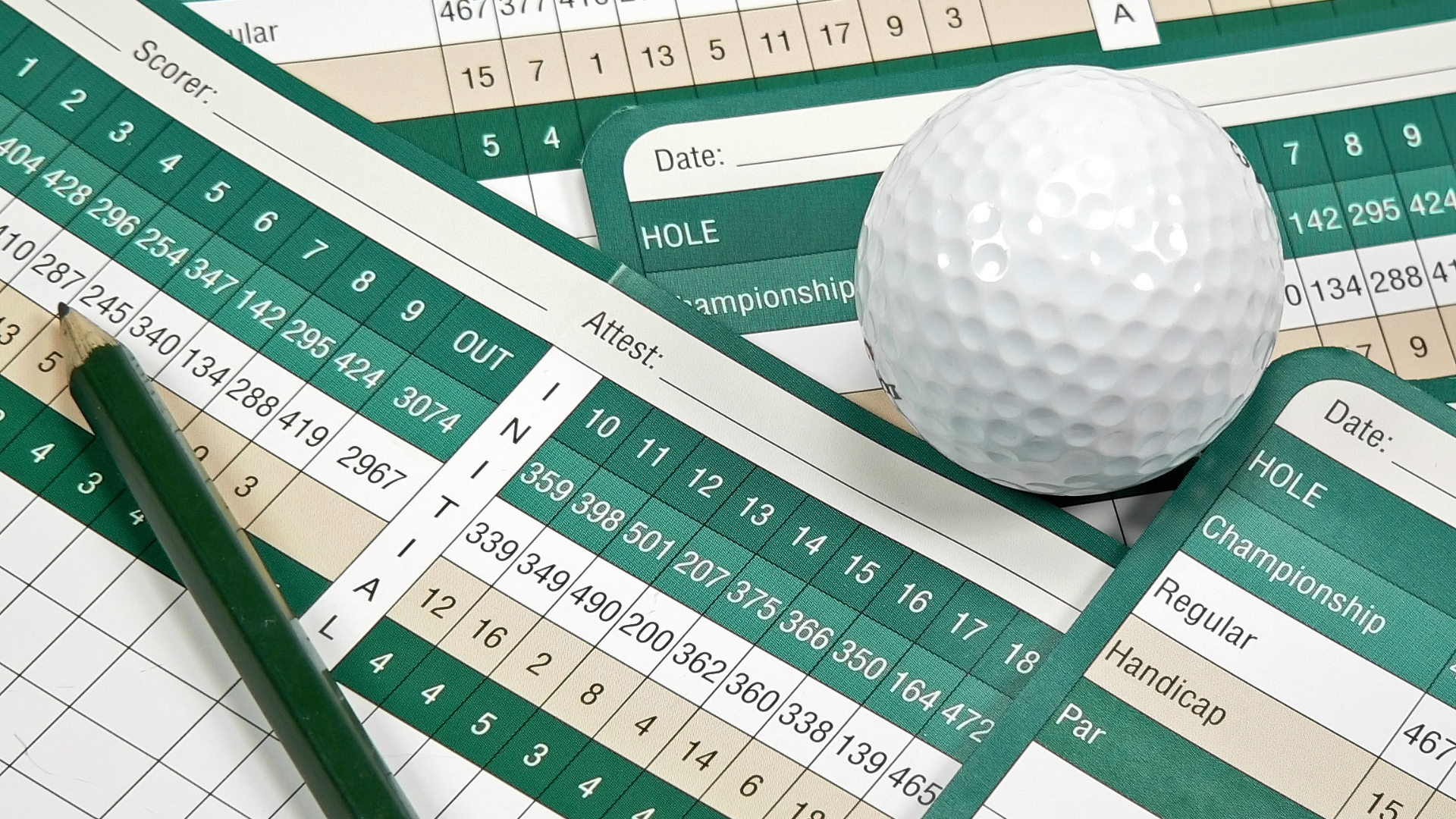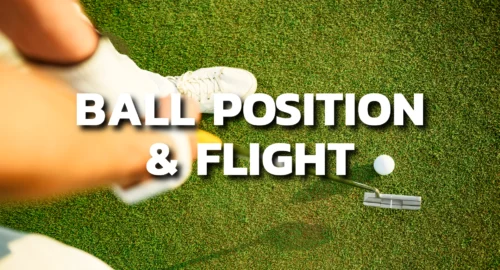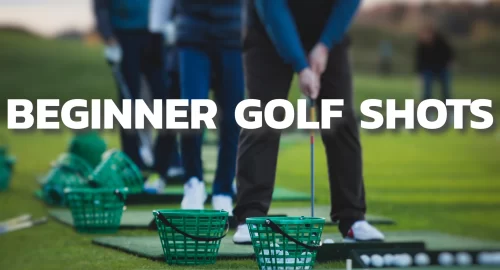
Golf is a sport that not only challenges your mental and physical skills on the course, but also demands a high level of etiquette, respect, and sportsmanship.
If you’re just starting out with the game of golf, we’re hoping this overview of golf etiquette helps you avoid any issues and make the most of your experience. Proper etiquette ensures that you respect the game, the golf course, and your playing partners.
Golf Etiquette for Beginners
Let’s get started with seven general rules of golf etiquette. These may seem obvious, but they’re worth mentioning to get started!
- Dress the part. Make sure your outfit is right for the golf course by calling ahead or checking the dress code online. Private country clubs tend to have the strictest rules so make sure to double-check to avoid any issues upon arrival.
- Show up early to the first tee. A late arrival to the first tee throws off the rest of the tee times behind you and will likely upset your playing partners.
- Introduce yourself. If you’re playing with new people make sure to introduce yourself on the first hole, identify which tees you’re playing, and write everyone in the group’s name down on the scorecard.
- Always yell fore. If your golf ball is heading anywhere near another player make sure to yell fore loudly so they can get out of the way. If you hear fore yourself, make sure to find cover and put your arms over your head.
- Don’t talk while other players are swinging. This is one of the cardinal sins in golf and a good way to make fellow players mad (and anger the Golf Gods). You’ll also want to silence your cell phone so the ring or vibration doesn’t distract other players.
- Keep your temper in check. Golf is a frustrating sport at times, but don’t let your anger get the best of you by slamming/throwing clubs or cursing loudly. This is not only unprofessional but is potentially dangerous to your playing partners. Not to mention behaving in this manner is a good way to not get invited back to a private golf course.
- Always shake hands with your playing partners. Once everyone is done on the 18th green, take your hat off and shake hands with your playing partners.
Now, let’s get into some more specific etiquette rules that occur before, during, and after the round.
Arrival and Warming Up
Proper etiquette at the golf course starts the moment you arrive in the parking lot.
First, make sure you arrive well before your tee time so you have time to check in/pay for the round, meet your playing partners, get your cart, and warm up. You should arrive at least 30 minutes early but we suggest 45–60 minutes to get your game ready.
The extra 15–30 minutes will give you plenty of time to warm up and start the day right. There’s nothing worse than rushing out of your car to the pro shop and straight to the first tee. This increases the risk of injury and will likely take several holes to get warmed up.
During your warm-up make sure you have everything you need for the round including tees, a divot repair tool, golf balls, and food/drinks. If not, stop by the pro shop or snack shack so you’re ready for the round.
Before teeing off, make sure to check the local cart path rules to know if it’s path only, 90 degrees, or local rules such as “lift clean and place.”

Tee Box Etiquette
On the first tee box, you’ll want to establish a few things including:
- Tee boxes. Check the scorecard to identify yardages and slope ratings to figure out which tee box is best for your game. Playing tee boxes that are too long/challenging leads to slower golf and overall not a very enjoyable day on the links.
- Local rules. Check with the starter to learn any local rules such as internal out-of-bounds, penalty areas, and cart path rules.
- Identifying marks on your ball. When introducing yourself to fellow playing partners make sure to clearly identify your golf ball. It’s a good idea to carry a Sharpie in your golf bag and add custom markings to avoid hitting the wrong ball.
- Betting or gambling games. Before anyone tees off make sure to establish if you’re playing any sort of game like match play, Wolf, or other gambling games. Also, make sure to clearly identify any wagers to avoid any confusion during or after the round.
- Watch your playing partners. As others tee off make sure to watch their golf ball so someone in the group can easily find it and speed up the pace of play.
- Don’t talk to your playing partner’s golf ball. On the tee box, approach shots, or on the green don’t talk to other playing partners shots. There’s nothing worse than hitting a bad shot only to hear a playing partner say, “Sit down or stay out of the water.” It’s also bad karma to say “Good putt” to another playing partner when the ball is still rolling and hasn’t found the bottom of the cup yet.
To determine who tees off first, you can always flip a tee with everyone standing in a circle. Whoever the tee points at when it lands goes first and then.
For the rest of the round always wait until the group ahead of you is clear before teeing off. And to repeat one of the seven rules from always, always yell fore if your drive is near another golfer.
Approach Shot Etiquette
In general, it’s best to let the golfer who is furthest away from the green hit first. This will make sure other golfers aren’t standing ahead and potentially get hit by an errant shot.
Proper etiquette ensures that you respect the game, the golf course, and your playing partners
On your approach shots you’ll also want to make sure and always replace your divots with sand and seed. If they do not have any sand bottles, always replace them with the original divot to help the golf course heal faster.
If your ball ends up in the sand – in the fairway or greenside bunker – always rake it after you’re done hitting. Always enter the bunker from the low side and closest to your ball to speed up the process.
If someone in your group is struggling from the sand it’s a good idea to rake for them to help keep up the pace of play. Finally, make sure to leave the rake just outside the bunker and not near the lip for the next groups.
Putting Etiquette
Once you’re on the green the most important etiquette rule is to repair your pitch marks.
You can do this with a tee or divot repair tool by working the edges toward the center and tapping down with your putter. It’s also a good idea to repair other pitch marks, especially one that might be on your line.
Once you’ve repaired the green, always mark your golf ball with a coin or ball marker. If your mark is in the way of another player’s line, ask them where you need to move it.
Typically moving your mark one putter head length left or right will help clear the line. Just make sure to move your mark back before your putt to avoid a penalty stroke.
In terms of playing order, the person who is furthest away from the hole putts first.
On the greens you also want to:
- Stay quiet when golfers are putting.
- Avoid walking through anyone’s line when reading your putt or marking your ball.
- Do not stand directly behind a player while putting or near the hole to avoid being distracting. If you’re on a similar line as your playing partners you can quickly get behind them after they’ve hit the putt to study how it breaks. It’s best to generally stand to the side of players to avoid being in their view while putting.
- Ask golfers if they want the flagstick removed or tended (remember that it’s no longer a penalty to putt with the flag in the hole).
- When you remove the flagstick make sure it’s not in anyone’s line of sight or near the hole.
- Read your putt and get clear on your line while others are putting so you’re prepared when it’s your turn.
- Never take your golf ball out of the hole with a golf club as it can damage the cup.
- Once everyone is done with the hole, place the flag securely in the hole, confirm scores on the card, and head to the next tee box.
Keep Up Pace of Play
During the round one of the most important things to remember is to keep up the pace of play. A round of golf takes at least four hours but slow play can add 30-60 (or more) minutes.
Use these etiquette tips to keep up the pace of play:
- Play ready golf* unless it’s a tournament.
- Check the scorecard to play the correct tee boxes.
- Minimize time spent at the turn by ordering food ahead of time.
- Park your golf cart or push cart near the side of the green toward the next tee box.
- Carry a rangefinder or golf GPS device to quickly find the distances for every shot.
- Take a golf cart if it’s a long golf course and/or one that has a lot of distance between shots.
- If you might have lost a ball or hit it out of bounds, hit a provisional to avoid going back to the previous spot.
- Help fellow golfers look for lost balls. If a ball is lost, remember the rules of golf only allow players to look for three minutes.
- Plan your shots as other players are hitting so you’re ready when it’s your turn.
- When it’s your turn to hit make sure it doesn’t take more than 30 to 45 seconds (at most). Studies have shown that less time standing over the golf ball actually leads to better performance too.
*Ready Golf: In a round of golf, always be thinking ahead so that you’re “ready” when your turn is up. This keeps the game moving.
If your group is taking too long and the course isn’t busy, it’s a good idea to let other groups play through. This will help you enjoy the day more by not playing rushed and allow a faster group to move ahead.
Learn the Rules of Golf
Another important tip that also helps speed up the pace of play is to learn the rules of golf. While we’re not asking you to memorize the USGA handbook, it’s a good idea to know important rules on the following:
- Lost ball
- Provisional
- Penalty areas
- Out of bounds
- Cart path relief
Or, if you get into a match play competition, make sure to learn these rules as they’re slightly different from stroke play. To familiarize yourself with some must-know golf terms for beginners, check out this blog post, 50 Terms Every Beginner Golfer Should Know.

Post Round Etiquette
As mentioned above, once everyone putts out on the 18th green make sure to shake hands to conclude the round. You can also exchange scorecards if needed for signatures.
If you have a golf cart, make sure to return it to the staging area and remove any trash. Always check the cart for any golf accessories like rangefinders, gloves or personal items like wallet or keys. Sometimes attendants will offer to clean your clubs – if they do, make sure to give them a cash tip.
If you plan on sticking around to hit the 19th hole for food or drinks, it’s a good idea to put your clubs back in your car. Unfortunately, sometimes people steal equipment from the club drop off area and courses generally aren’t responsible.
Finally, make sure to confirm scores with everyone, add them up, and enter them into your GHIN to update your handicap.
Commonly Asked Questions About Golf Etiquette
What is the 90-degree rule in golf?
The 90-degree rule is about golf carts on the course. If the “90-degree rule” is in effect, this means you can drive on the course but only at a 90-degree angle from the cart path. This minimizes carts driving all over the course and helps to maintain the playing conditions.
If a golf course has a “cart path only” rule, motorized carts must always stay on the path. Always check with the pro shop or starter to confirm cart rules before the round, as this is a very important rule.
Where do you stand when someone is putting?
When another golfer is putting, it’s best to stay out of their eyesight to avoid causing a distraction. Standing off to the side of them, in most situations in golf, is the best way to go.
What do you do if someone hits into your area?
If someone else on the course hits the ball and it lands in your general area, this is often called “getting hit into.” While you can never know someone’s true intention, it’s best to give them the benefit of the doubt the first time it happens, and not react violently (like stepping on the ball or throwing it back at them). If it becomes an issue a second time, speak with the other party calmly and rationally.
Final Thoughts on Golf Etiquette
As you venture into the world of golf, remember that etiquette is nearly as important as your swing. Following these golf etiquette tips will not only earn you respect on the course but also make your experience more enjoyable.
Remember, golf is not just about hitting the ball; it’s about integrity, sportsmanship, camaraderie, and spending time outdoors. By embracing the principles of golf etiquette for beginners, you’ll not only become a better golfer but also contribute to the rich tradition of this great game.

